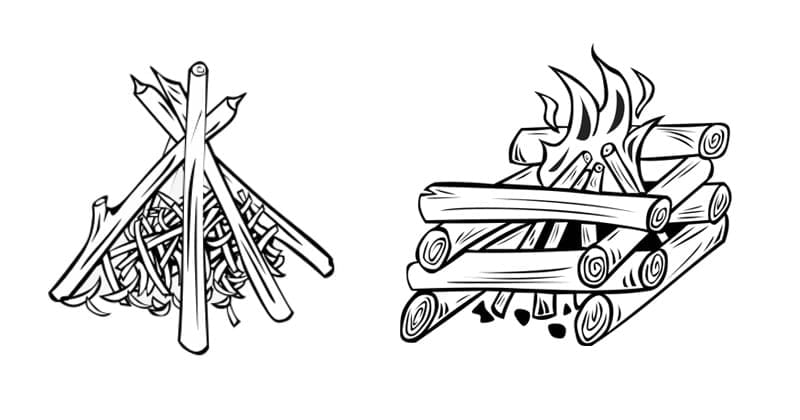Cyber threats aren’t just “out there” anymore—they’re part of everyday life. From fake emails trying to trick you into clicking a link, to criminals locking up a company’s files for ransom, the dangers are real and constant.

Approx reading time: 4 minutes

Mastering firecraft, the skill of building and maintaining a fire, is essential for survival and comfort in many scenarios where you find yourself outdoors. From wilderness adventures to emergency situations where traditional heating and cooking methods are unavailable, building a fire is something you just need to know.
Fire serves multiple purposes, including warmth, cooking, purifying water, signaling for help, and also protection from wildlife. Here’s a short guide to building and maintaining a fire, tailored for both beginners and experienced preppers.
The fire triangle consists of three essential elements: heat, fuel, and oxygen. Removing any one of these elements will quickly extinguish a fire. Understanding this concept is crucial for both starting a fire as well as putting it out safely.
Tinder: Collect dry, or at least mostly dry and lightweight materials that will catch fire easily, such as dry leaves, pine needles, or use cotton balls soaked in petroleum jelly. Well prepared tinder will help very much you when starting a fire.
Kindling: Gather small sticks and twigs that will catch fire from the tinder and help build the fire up qiockly.
Fuel Wood: Look for larger pieces of wood that will burn for longer periods. Ensure the wood is dry; wet wood will smoke and is difficult to burn, so you might have problems starting a fire in the first place.
Always choose a safe, open location well away from any trees and brush. Clear a space on bare earth to prevent the fire from spreading. If available, use a fire ring or build a ring of rocks to contain the fire safely.
Teepee: Place your tinder in the center and build a teepee of kindling around it. Add larger sticks as the fire grows. This structure allows good airflow and is ideal for quick, hot fires outdoors.
Log Cabin: Start with a base of kindling, then stack larger pieces of wood in a crisscross pattern. This method is great for more long-lasting fires and cooking outdoors.
You can combine those two layouts also, putting a teepee inside the logs, making the fire even stronger.

Light the tinder with matches, a lighter, or a fire starter, whatever you have at hand. Gently blowing at the base of the fire will provide additional oxygen, which will help the fire grow quicker. As the fire catches on add more kindling, and only then gradually add larger pieces of wood.
Regulate Oxygen Flow: Adjust the spacing between logs as necessary to increase or decrease oxygen flow, controlling the fire’s intensity at any givem time.
Add Fuel Gradually: Always add larger pieces of wood as needed, but avoid smothering the fire when doing so. Alwways keep the fire at a manageable size, so it doesn’t outgrow the ring of rocks you’ve built.
Safety First: Remember to never leave a fire unattended. Also a good practice is to keep some water or a shovel nearby to extinguish the fire if necessary.
You must ensure the fire is completely out before leaving the site in order to prevent unwanted spreading into the woods. Douse it with water, stir the ashes with a stick, and then douse it again. As a general rule of thumb, the fire is not completely out until you can place your hand over the ashes without feeling the heat.
Wet Weather Fire Starting: There may be situations when you need a fire, but the weather is wet and uncomfortable. Always carry waterproof matches or a fire starter in your bug-out bag that will ease your efforts. To start a fire easier, use resin-rich woods like pine, which can burn even when wet, as kindling.
Wind Protection: Build a windbreak with logs or rocks to protect your fire in windy conditions. A little wind will help the fire start, but just a bit more and you could have serious problems starting a fire at all.
Efficient Cooking: For efficient cooking, use coals rather than open flames for cooking to distribute heat more evenly and prevent burning in the pan.
Mastering firecraft is a blend of knowledge, skill, and respect for nature. It requires lots of practice, patience, and full adherence to safety principles. By understanding the basics of building and maintaining a fire, you’re equipped to harness one of nature’s most powerful tools, ensuring warmth, safety, and sustenance in various survival situations.